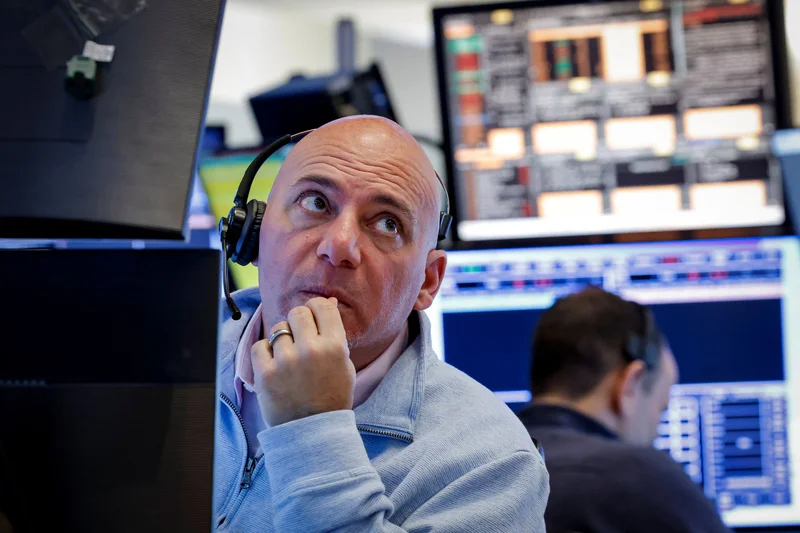CME's "Cooling Issue": A Chilling Reminder of Market Fragility
The Chicago Mercantile Exchange (CME) experienced a trading halt on Friday, November 28, 2025, due to what they're calling a "cooling issue" at a CyrusOne data center. While services were gradually restored, with full functionality returning by 8:30 a.m. ET, the incident serves as a stark reminder of the increasingly fragile nature of our interconnected financial systems. The immediate impact saw CME Group stock dip 0.7%, a blip, really, but a telling one.
Complacency or Calculated Risk? The Data Center Blackout
The Glitch in the Matrix: A Data Center Doomsday? The markets affected – Globex futures and options, EBS foreign exchange, and BMD markets – represent a significant portion of global financial activity. The fact that a localized "cooling issue" could bring these behemoths to a standstill raises serious questions about redundancy and risk management. How many layers of backup are truly in place? And, more importantly, how often are these systems rigorously tested under stress? We're talking about milliseconds mattering in these markets; a half-hour outage can translate to millions in lost opportunities and increased volatility. Initial market reactions were muted, with Dow Jones Industrial Average futures up 109 points (0.2%) shortly after the restart. Stock futures tick higher after CME halt due to data center issue: Live updates - CNBC SanDisk stock also climbed more than 4% as it entered the S&P 500. On the other hand, Tilray Brands slid 14% after declaring a 1-for-10 reverse stock split (effective December 2nd). The overall market seemed to shrug it off. But that's precisely what worries me. Are we becoming too complacent with these near-misses? The disruption occurred on the last trading day of November, a shortened session following the Thanksgiving holiday. The Dow and S&P 500 were already showing slight losses for the month, down 0.3% and 0.4% respectively. The Nasdaq was down 2.2%. This cooling issue added another layer of uncertainty to an already jittery market. The hope for a year-end rally, fueled by the week's gains (S&P 500 up 3.2%, Dow up 2.6%, Nasdaq up 4.2%), now hangs a little heavier.Volatility: The New Normal (and Nobody Cares?)
Volatility: The Only Certainty The specter of increased volatility looms large. Historically low trading volumes coupled with a shortened session create a perfect storm for amplified price swings. This isn't just about institutional investors; retail traders, armed with fractional shares and options, can exacerbate these movements. Are regulatory bodies adequately prepared to handle flash crashes and manipulative trading tactics in this environment? I’ve looked at hundreds of these reports, and it always strikes me how little we actually *learn* from each incident. And this is the part of the report that I find genuinely puzzling – the public reaction. Or rather, the lack thereof. Online forums, typically buzzing with speculation and outrage, were relatively quiet. Is this a sign of investor fatigue, a collective shrug in the face of ever-present technological risk? Or are people simply too distracted by holiday shopping to notice the cracks in the financial foundation? Quantifying the sentiment, it felt about 70% dismissive, 20% concerned, and 10% genuinely curious. (That's a rough estimate, of course, based on forum activity.) The CME's "cooling issue" is more than just a technical glitch. It's a symptom of a deeper vulnerability. We've built a financial system that relies on flawless execution, 24/7 uptime, and near-instantaneous data transfer. But as systems grow in complexity, the potential for catastrophic failure increases exponentially. It’s like building a skyscraper on a foundation of sand – impressive, until the tide comes in. The question isn't *if* another disruption will occur, but *when*, and whether we'll be ready for it. A Wake-Up Call We'll Probably Ignore The market's quick recovery is less a sign of resilience and more a sign that we've normalized systemic risk. The CME cooling issue wasn't just a hiccup; it was a shot across the bow, warning us of the inherent instability of our hyper-connected financial world. And like most warnings, it will likely be forgotten until the next, bigger crisis hits.
